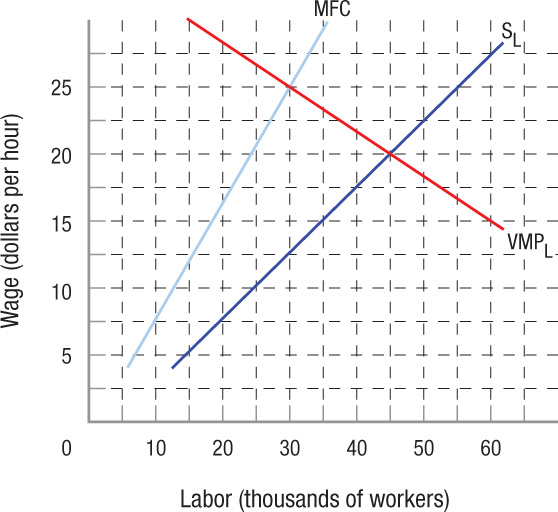Printed Page 307(cont.)
Appendix Questions and Problems
- The figure below shows the supply of labor, marginal factor costs, and the demand for labor for a firm that is large enough that it is essentially a monopsonist in the community in which it operates. Assume that all workers are paid the same wage and that they work 2,000 hours per year (40 hours a week for 50 weeks).

Question
What is the total wage bill (total wages paid by the firm) for this monopsonistic firm?
ProbA 11 1a. What is the total wage bill (total wages paid by the firm) for this monopsonistic firm?Question
If the firm was actually hiring from a competitive labor market, what would be the total wage bill for the firm?
ProbA 11 1b. If the firm was actually hiring from a competitive labor market, what would be the total wage bill for the firm?Question
What is the total value of the monopsonistic exploitation of labor by this firm?
ProbA 11 1c. What is the total value of the monopsonistic exploitation of labor by this firm?Question
Is the firm a competitor or a monopolist in the product market?
ProbA 11 1d. Is the firm a competitor or a monopolist in the product market?
Question
Would unions be more likely to organize successfully in highly competitive markets or in markets with monopsony power? Explain.
ProbA 11 2. Would unions be more likely to organize successfully in highly competitive markets or in markets with monopsony power? Explain.
[Leave] [Close]